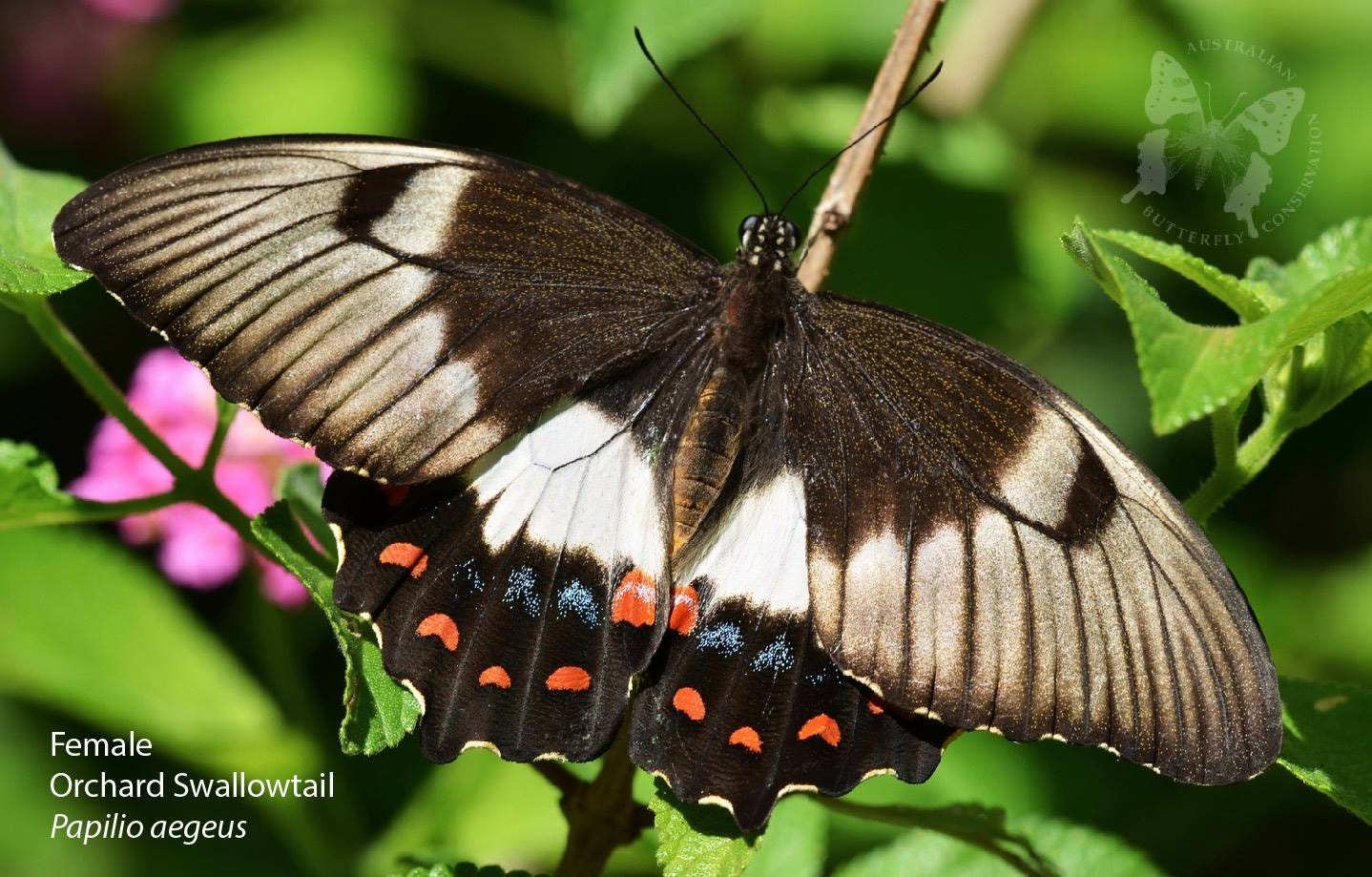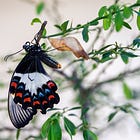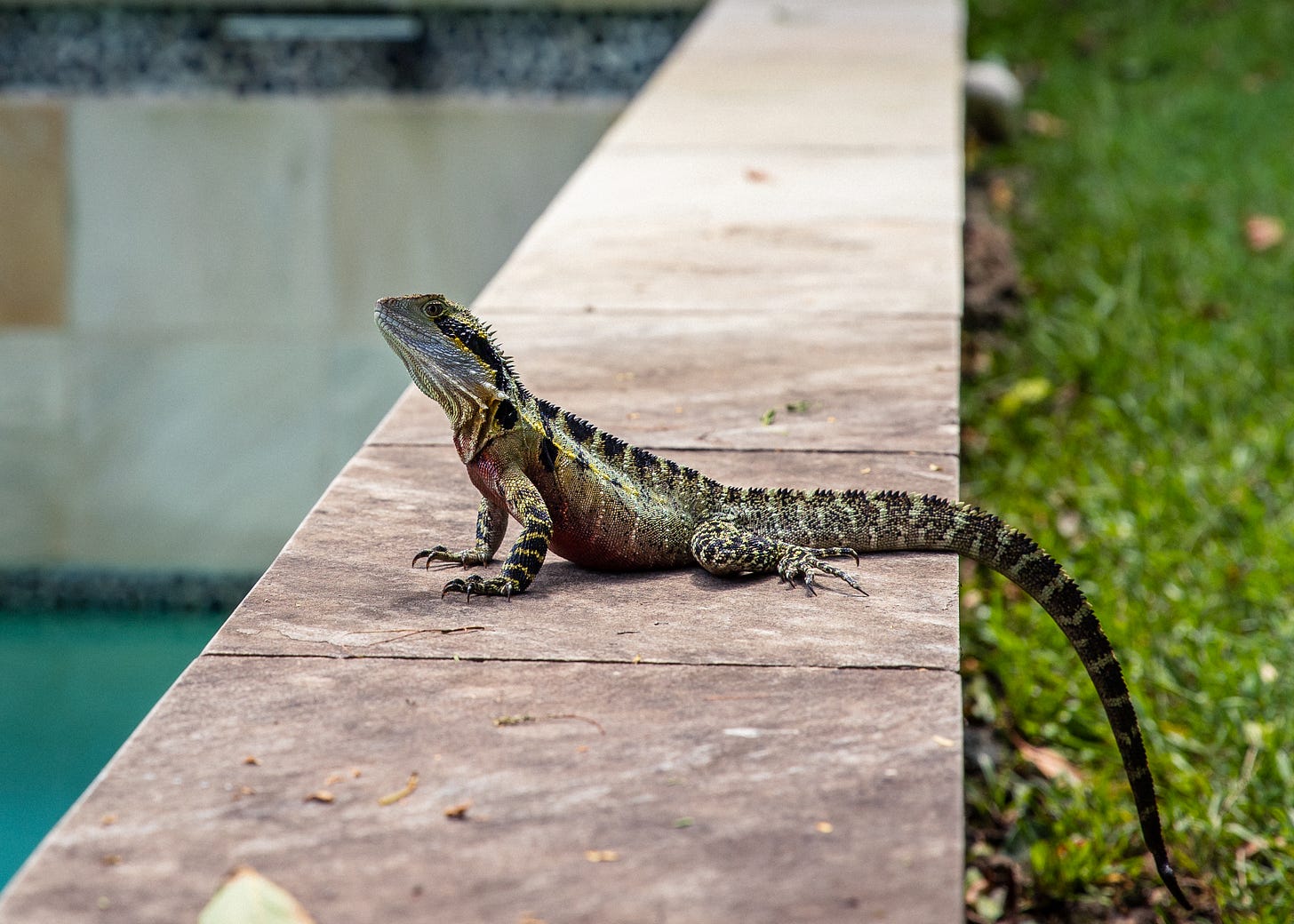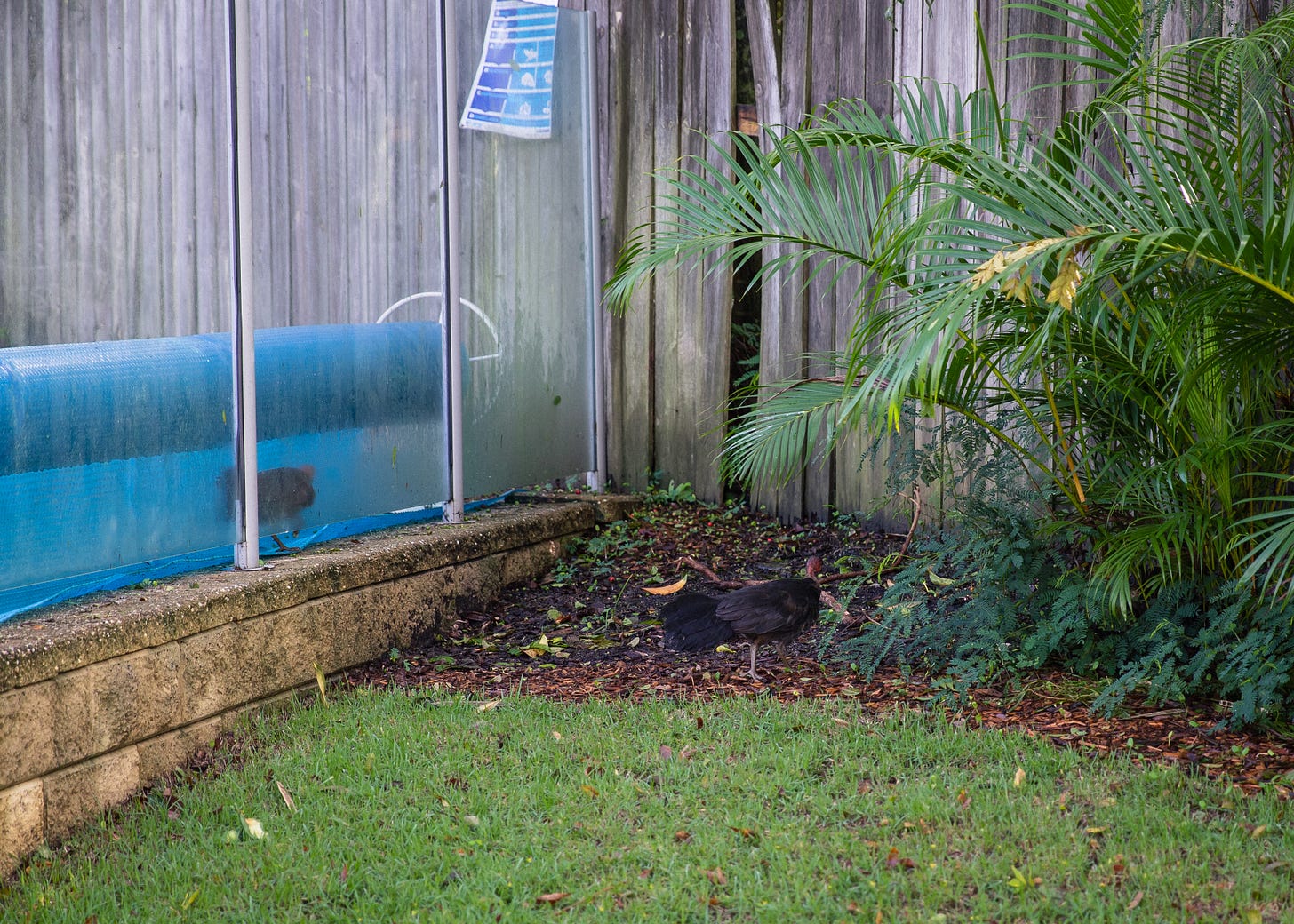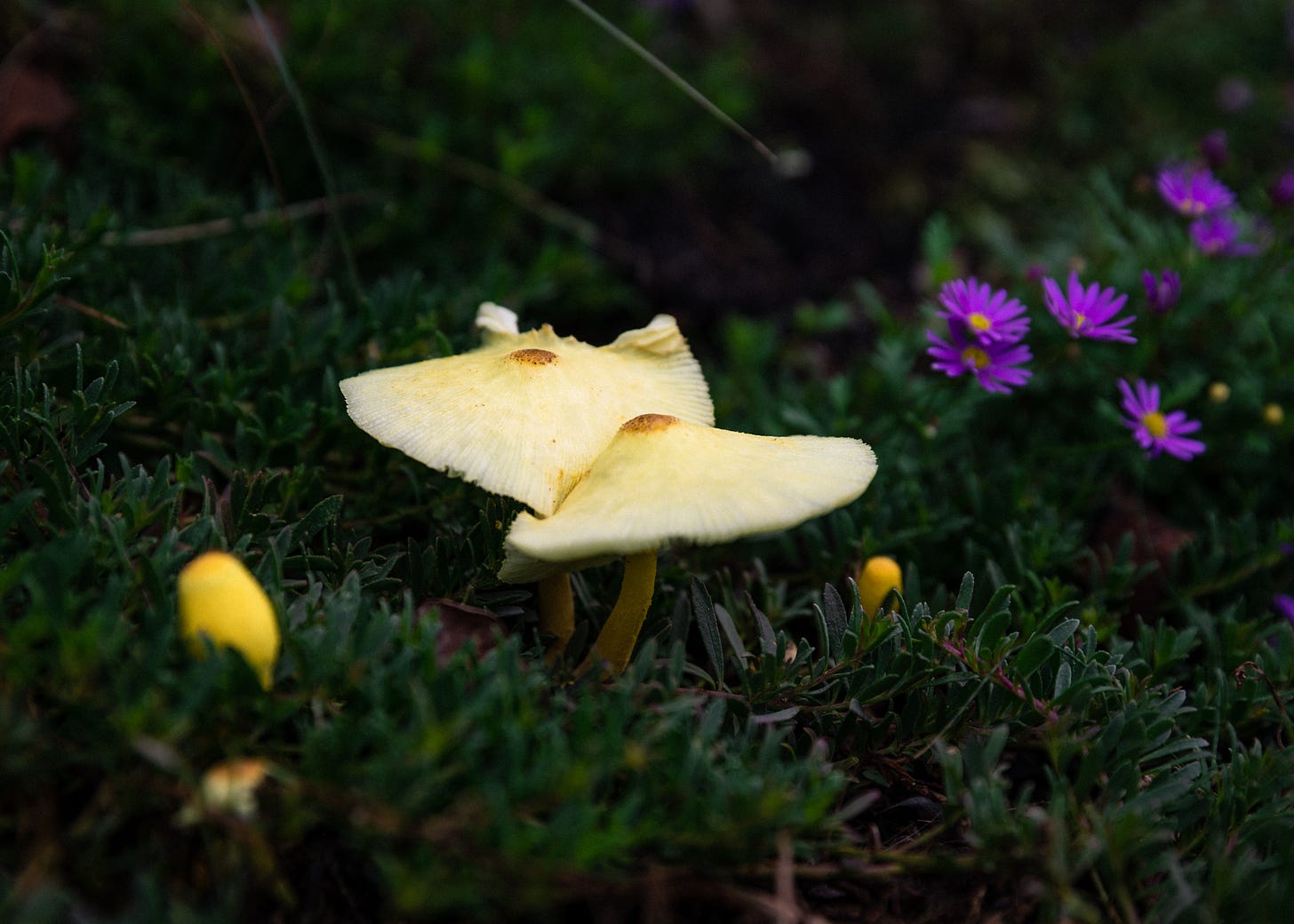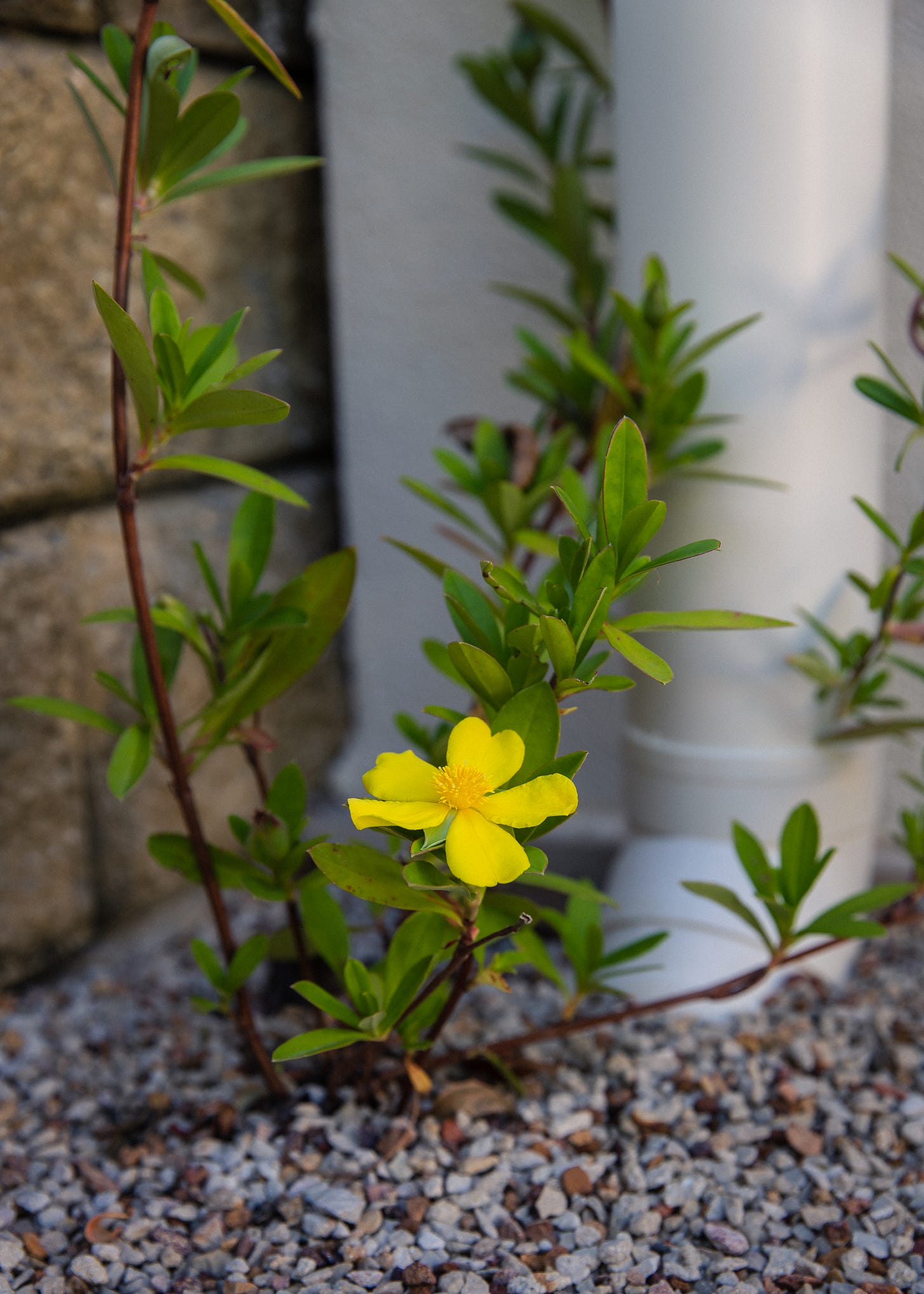If something I’ve shared has helped you in your garden or offered value in some way, and you’d like to contribute, you can Buy Me a Coffee.
I was watering the Garden last week when I noticed something on the Finger Lime (Citrus australasica). A little brown-and-white blob stuck to the stem. Bird poop, I thought. Until it moved.
It was a caterpillar.
A bit of Googling (and a lot of excitement) later, I found out it was the larva of a Papilio aegeus. The Orchard Swallowtail Butterfly.
They're one of Australia's largest butterflies found all along the East coast and some parts of South Australia and Western Australia. A common sight if you've got citrus trees growing in the Garden. The females lay eggs on soft new growth, and when the caterpillars hatch, they get straight to work eating the leaves, which makes them a little unpopular with those who prize their lemon trees.
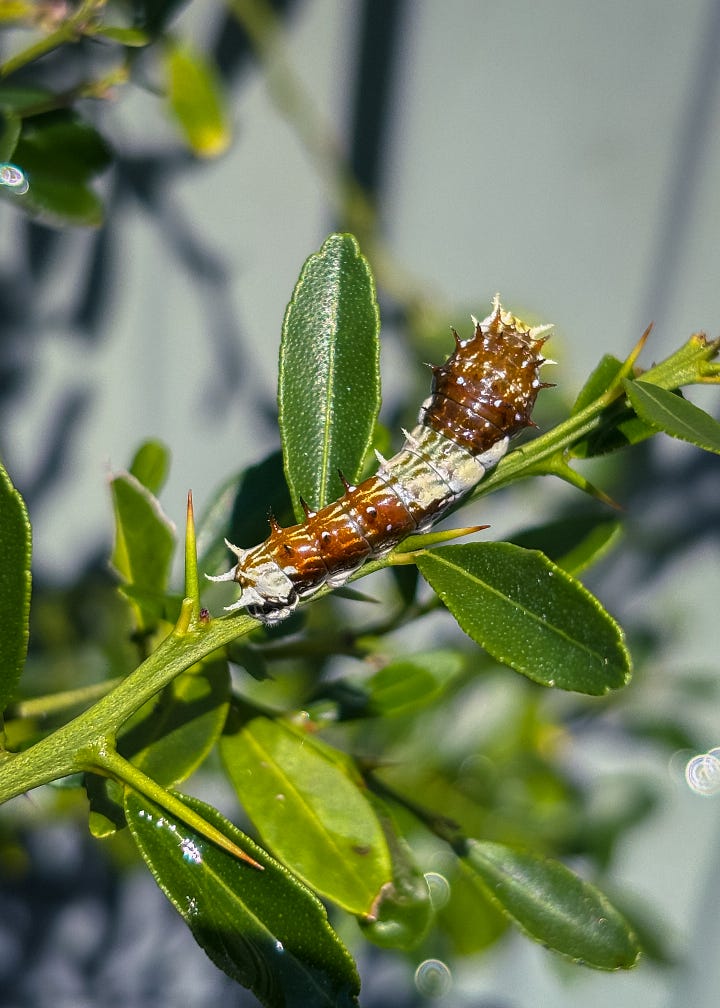
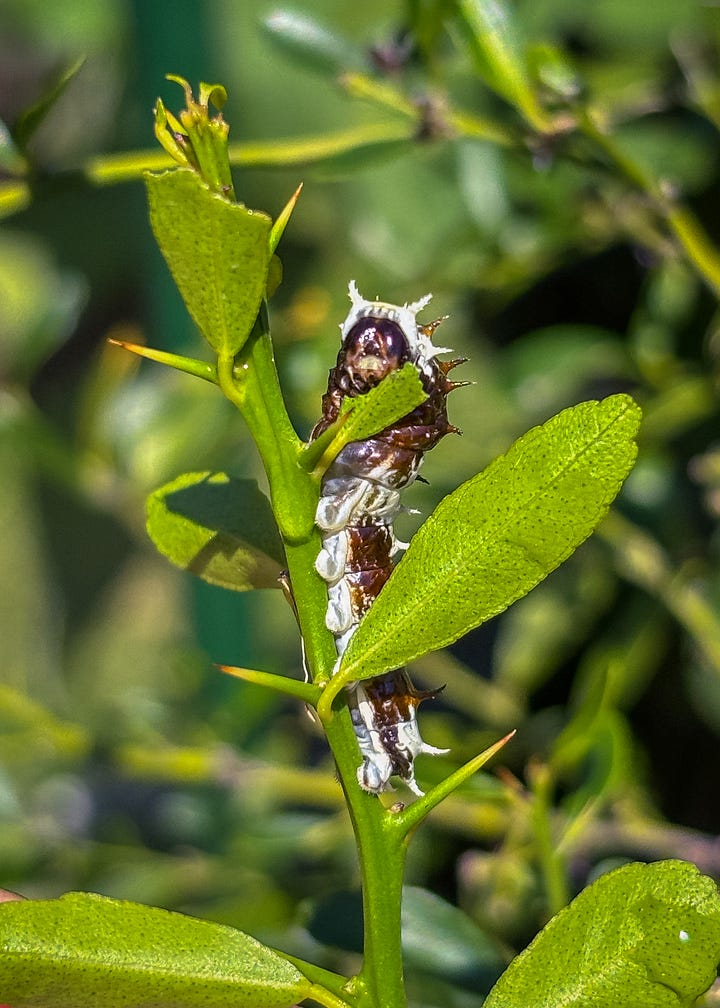
During the caterpillar's first Instars (life stages), they're camouflaged to look a bit like bird poop (clever) before growing greener and chunkier as they fatten up. The whole process, from egg to butterfly, can take just over a month, depending on the weather. A few days to hatch, a couple of weeks munching, then another few weeks pupating in their chrysalis before they emerge, wings drying and crumpled, ready to fly.
The finger lime is still in its pot (going on 18 months; I really need to plant it), so I promptly relocated the pot under the alfresco to protect the little guy from the weather and nosy birds. I pop out to check on it a few times a day, head tilted, watching my new tiny friend. Wondering how it manages to navigate the sharp thorns, avoiding impaling its soft body.
Two days ago, it started to form a chrysalis. Anchored by threads at each end. A tiny living hammock. On the road to metamorphosis.
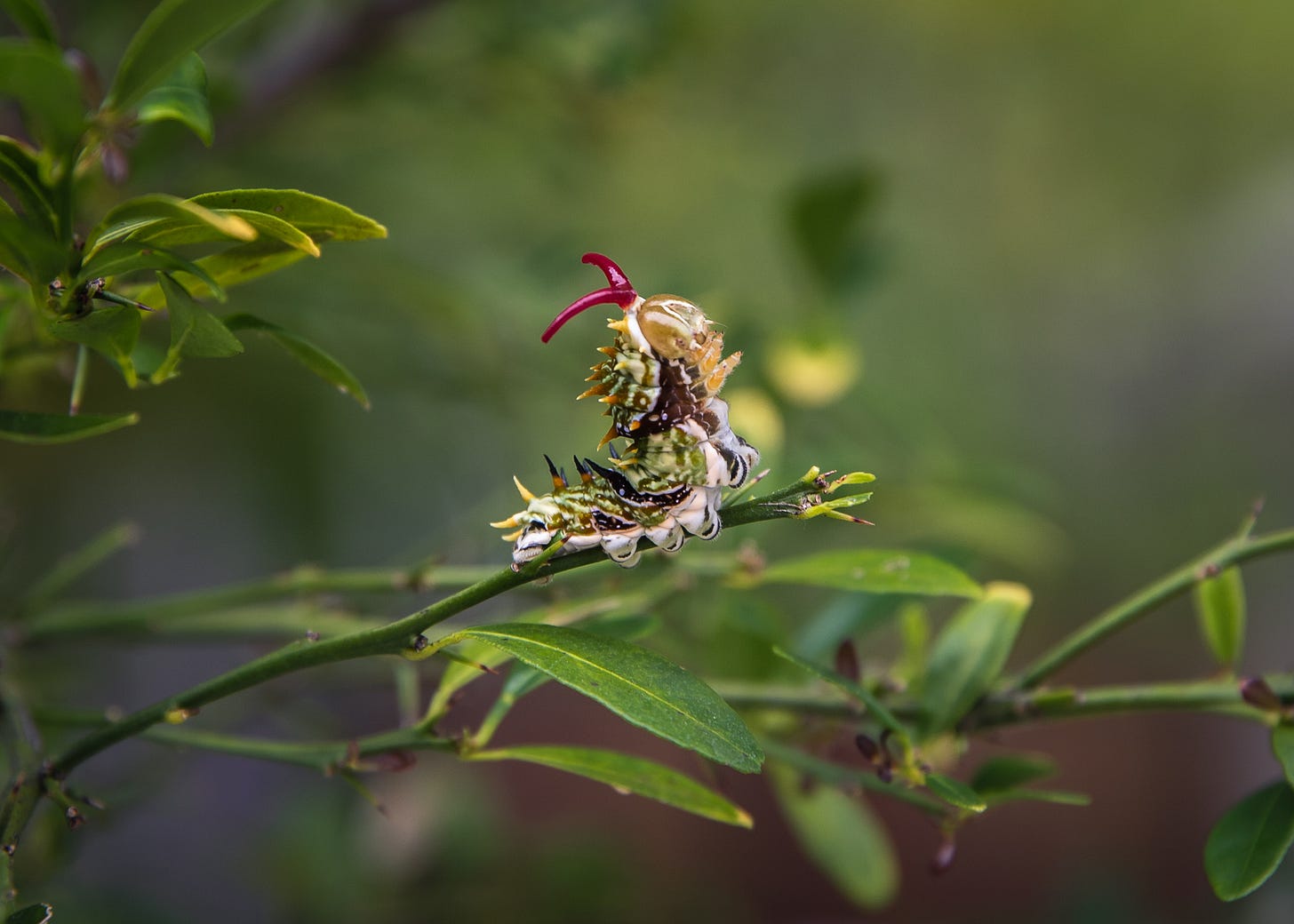
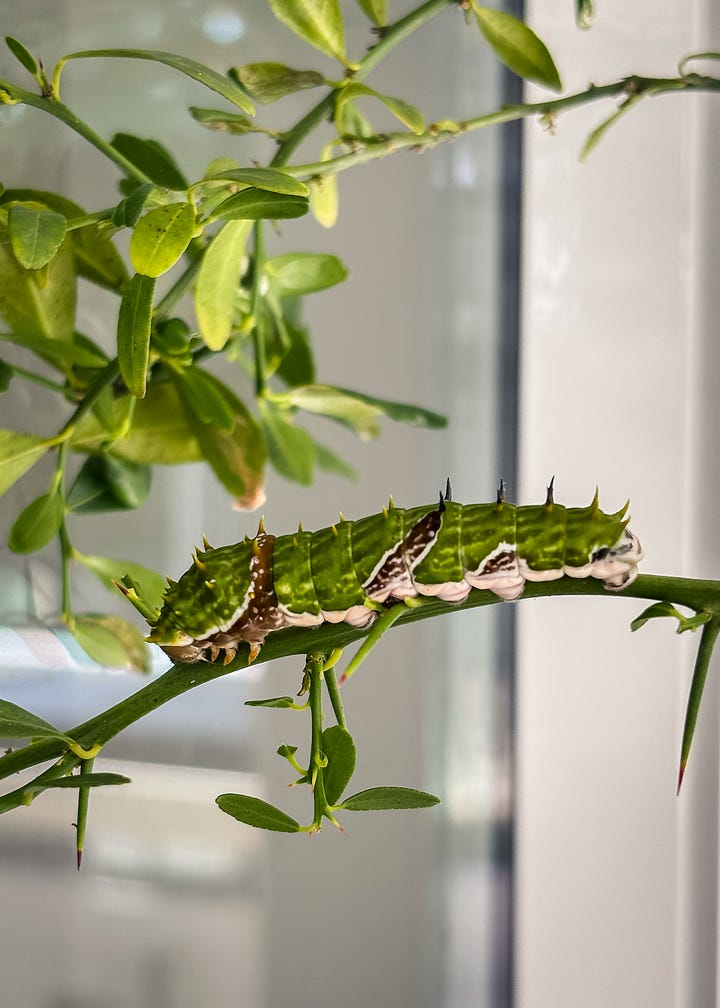
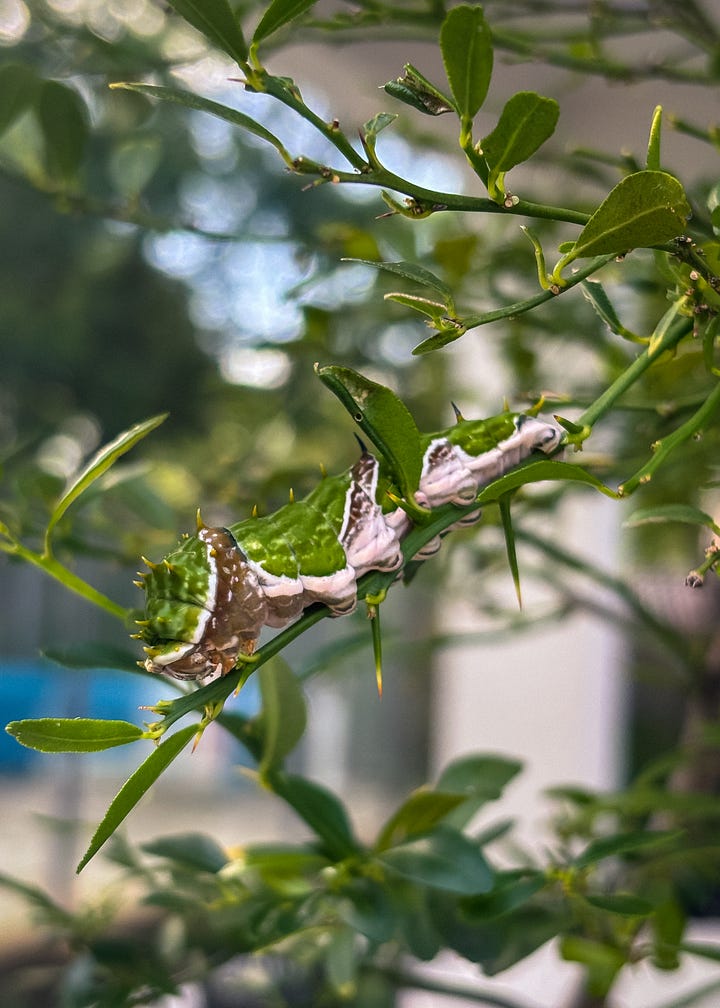
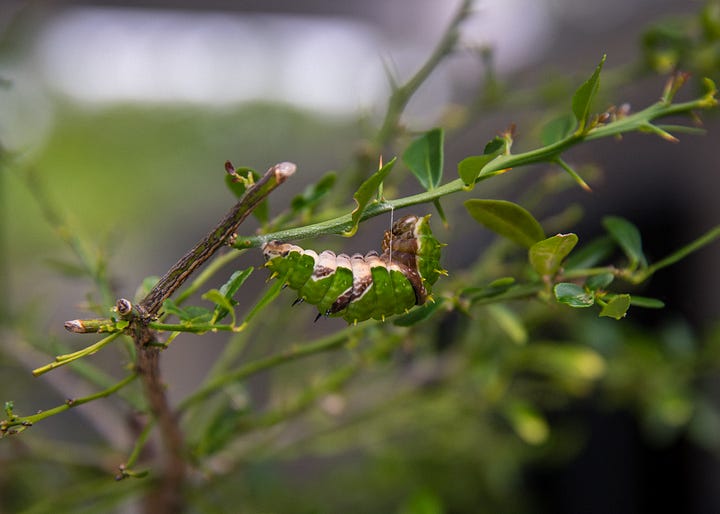
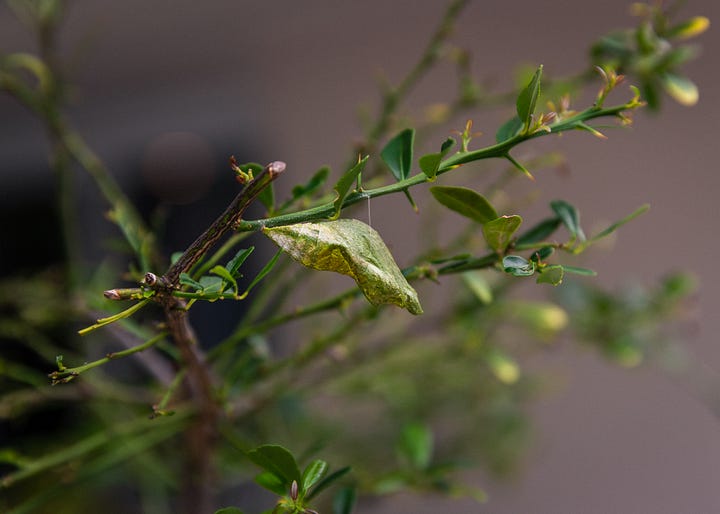
Now we wait. Somewhere between 2-3 weeks, reports vary. When the butterfly emerges, it will look something like this beauty.
Create your own butterfly garden
Butterflies and their future selves need very specific things to survive. If we want more butterflies in our gardens to really support them, we need to think about the whole life cycle.
If you want to learn how to create your own butterfly garden, you’ll find an excellent guide in this newsletter. As well as a brilliant story of backyard conservation led by a small community group in Brisbane. Plus, a downloadable spreadsheet you can use to help you keep track of the butterflies you want to attract and the plant species that support them.
This Week in the Garden
Autumn is for planting and plotting. I’m itching to get stuck into planting now that the mornings have that almost crisp feel. Autumn really is the best time to plant your natives. This is a great read on Autumn planting from Gardening Australia. I’ve got a beautiful white Callistemon citrinus ‘White Anzac’ ready to go into the rock garden this week. Plus a few more shrubby natives to add to the retaining wall. I’m also starting to think about what to plant to bring more butterflies into the garden.
The Big Boy Water Dragon (Intellagama lesueurii) has returned. He's been missing for a few weeks, until the last big storm rolled through and took the back fence with it. I'd wondered if he'd outgrown the small gap beneath the panels. They can climb just fine, but maybe they prefer the easy way in. Sure enough, a few days after the fence blew down, there he was again, stretched out on the pool wall like the king of the castle. When we put the new fence in, I'm leaving a lizard-sized gap so they can come and go as they please. We know there’s at least five water dragons of varying sizes occupying different areas of the backyard.
A new couple dropped by, too — a pair of Bush Turkeys (Alectura lathami). They stayed just long enough to throw some mulch around and inspect the garden beds for potential food before wandering off like a pair of disinterested house guests.
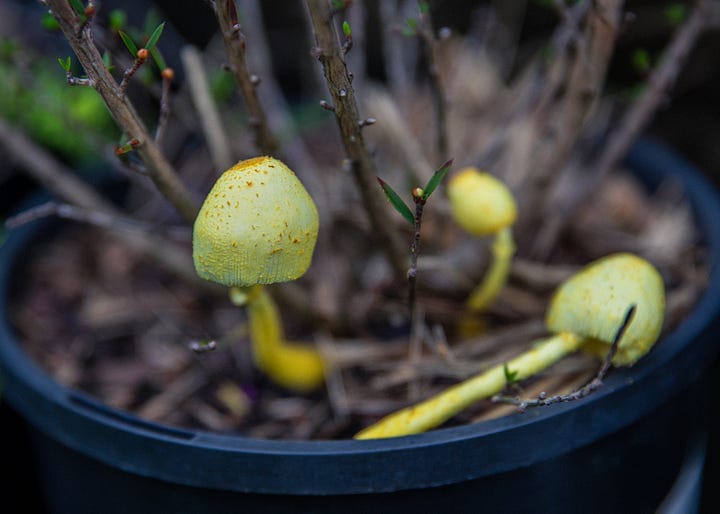
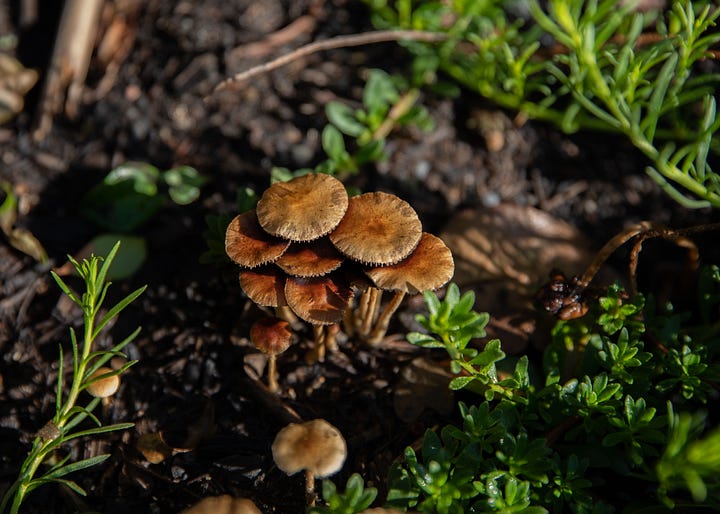
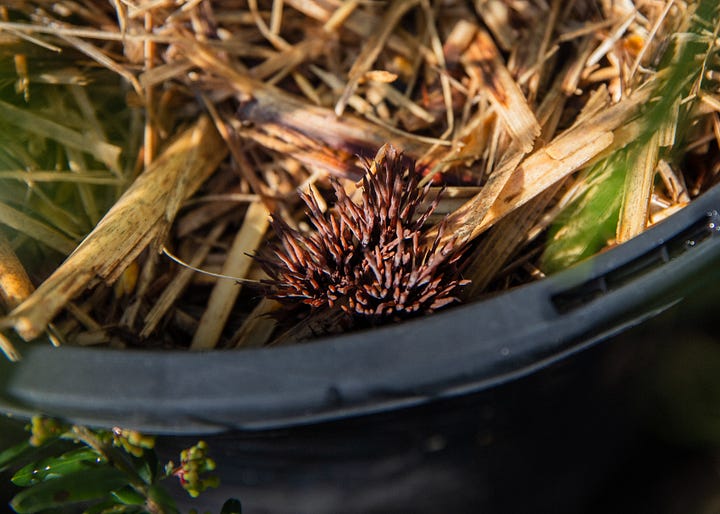
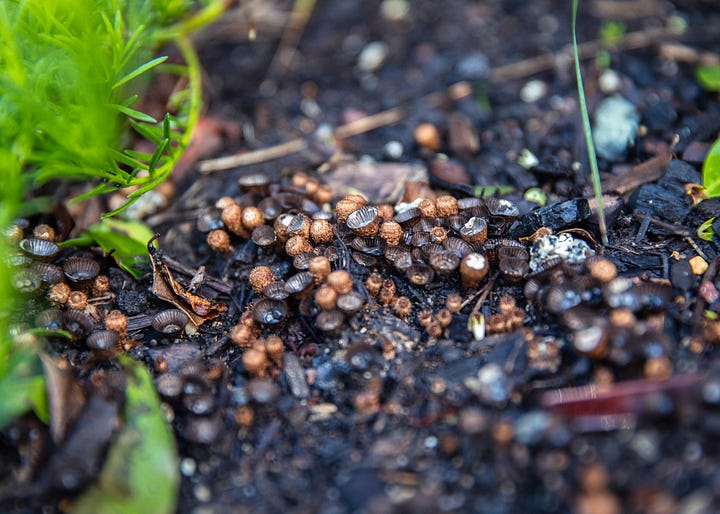
There's been an uptick in fungi diversity scattered across the various garden beds and potted plants. I haven't ID'd them yet. If you're a fungi fan (or just curious), there's a brilliant citizen science project running this week The Great Aussie Fungi Hunt and Fungimap to help you identify your garden finds.
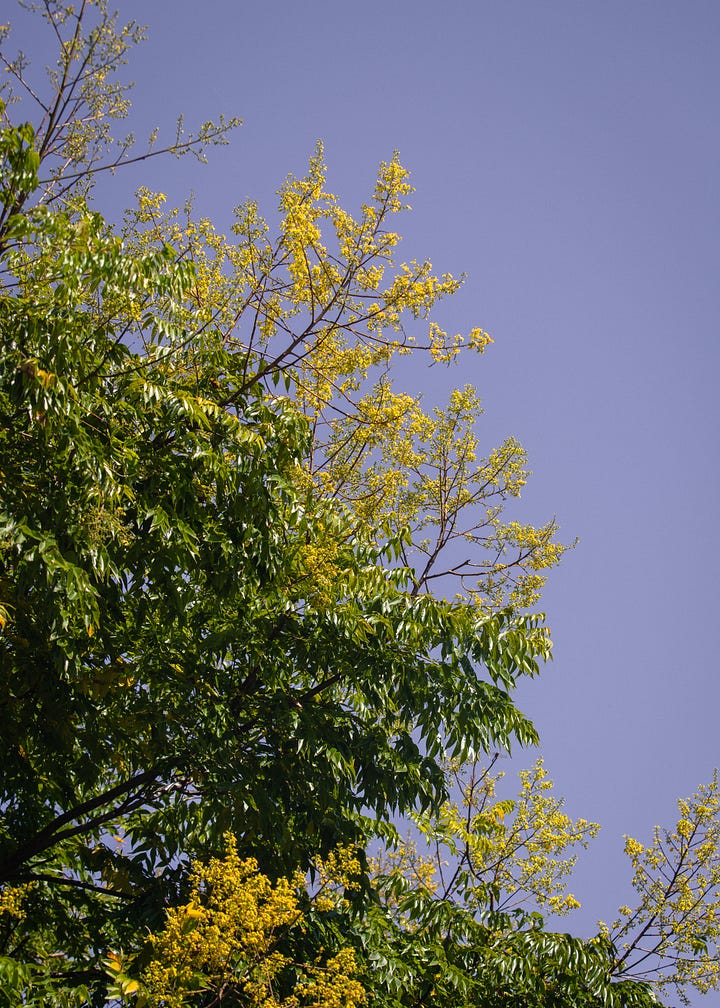
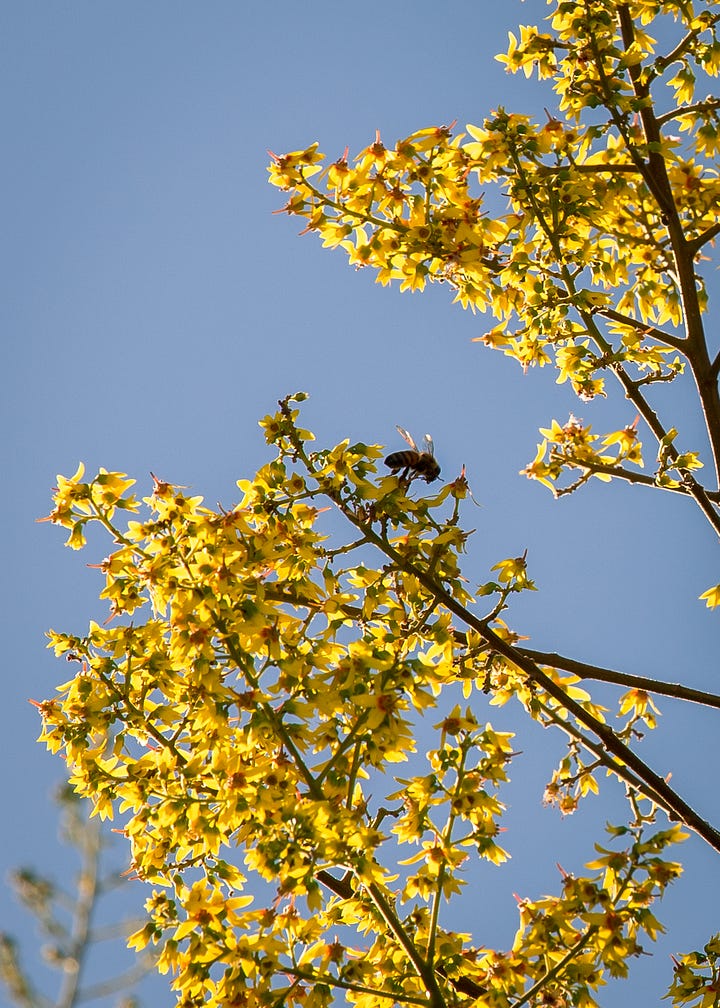
In the library garden, we have an enormous golden rain tree (Koelreuteria elegans subsp. formosana). It's not native; in fact, it's listed as an environmental weed in SE Queensland. But it's been here for decades, likely planted in the 80s when this area was developed. I’ve ummed and ahhed over removing it for the better part of a year.
It provides deep shade for the north side of the house, cools the roof, and serves as a perch for our usual cast of birds. Magpies (Gymnorhina tibicen), Butcherbirds (Cracticus torquatus), Rainbow Lorikeets (Trichoglossus moluccanus), Pied Currawongs (Strepera graculina), and our sweet Peewee pair (Grallina cyanoleuca). Even the Noisy Miners feed on the nectar alongside the honeybees and stingless bees (Tetragonula carbonaria). I’m sure it's home to a whole host of insect life we don’t see.
And it's hard not to think, even if we planted a native tree in its place today, it would take decades to reach this size. Decades before it could offer the same carbon sequestration, the same habitat, the same shade. So what's the right move here? I don't know. Not yet. For now, I've decided to make it more useful, add a water bowl, maybe nesting boxes. Give it a role in the ecosystem we're building here. And keep thinking.
Hibertia scandens, also known as snake vine or climbing guinea flower. Found naturally along the East Coast, the flowers are short-lived, only a day or so, but they do flower at regular intervals. We added some wire supports to the alfresco wall to help train it up the outside of the alfresco. It's got a long way to go before it's a lush green curtain. Sometimes I think about how, as gardeners, we pour so much of ourselves into our spaces when potentially it's the next person who will enjoy the regular flowering or sit under the shade of a tree we planted and nurtured.
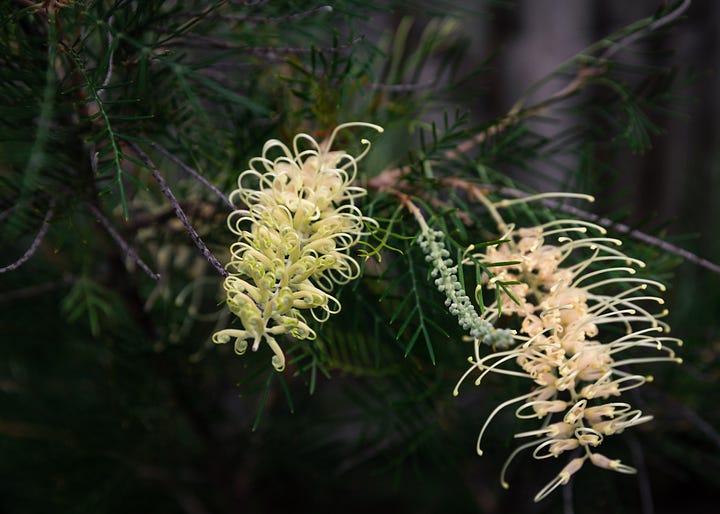
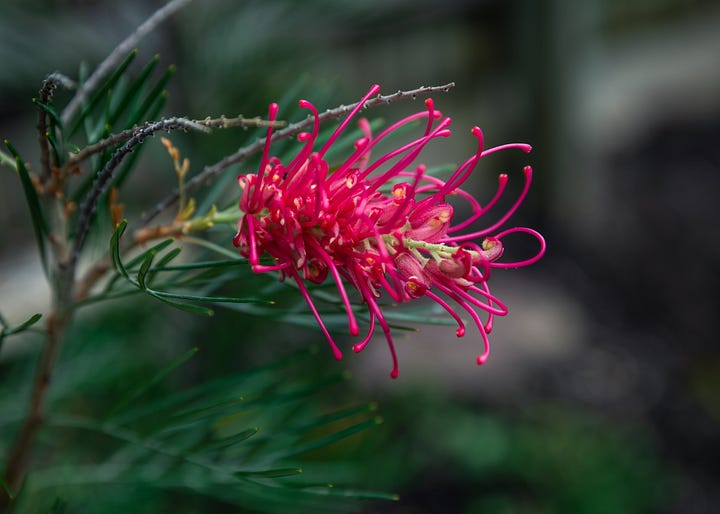
Grevilleas – Ivory Whip and Lollypops – have had a growth spurt the last month or so. These are some of my favourite natives. They're doing surprisingly well in the compacted clay soil, though they're in the best-draining part of the yard. I've been eyeing off a few Grevillea' Honey Gem' around the neighbourhood too. I would love to add one soon.
In true this is my whole personality now form, I'm off to the Melbourne Flower and Garden Show this weekend. I've been following the setup on socials this last week. The sheer scale of the landscaping exhibits being constructed, just wow. I'm so excited for the inspiration and soul nourishment I know this weekend will bring. A future newsletter will be packed with inspo from the garden show.
If something I’ve shared has helped you in your garden or offered value in some way, and you’d like to contribute, you can Buy Me a Coffee.




